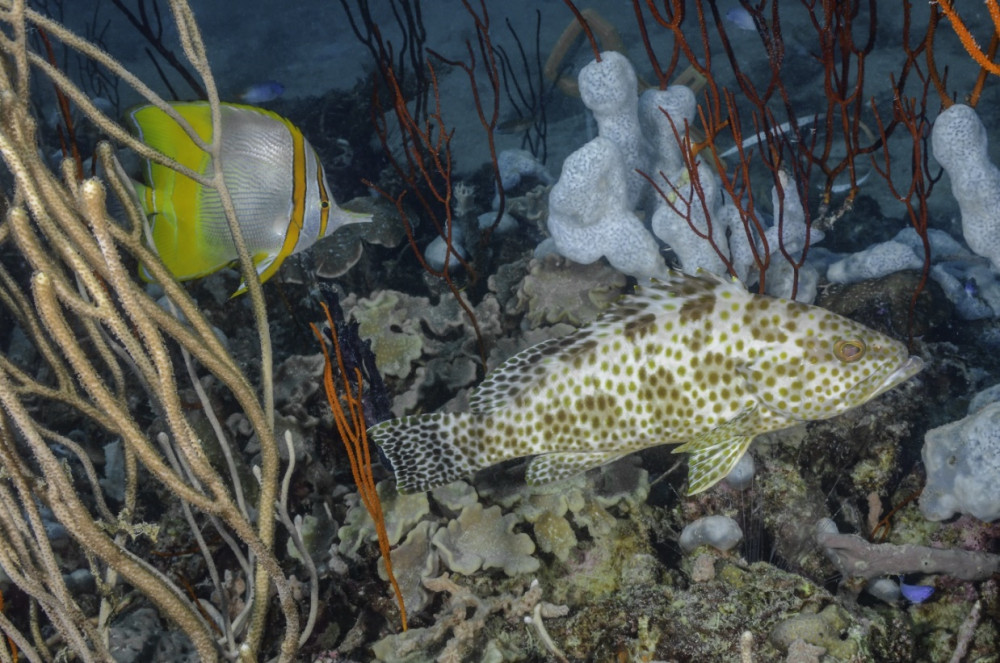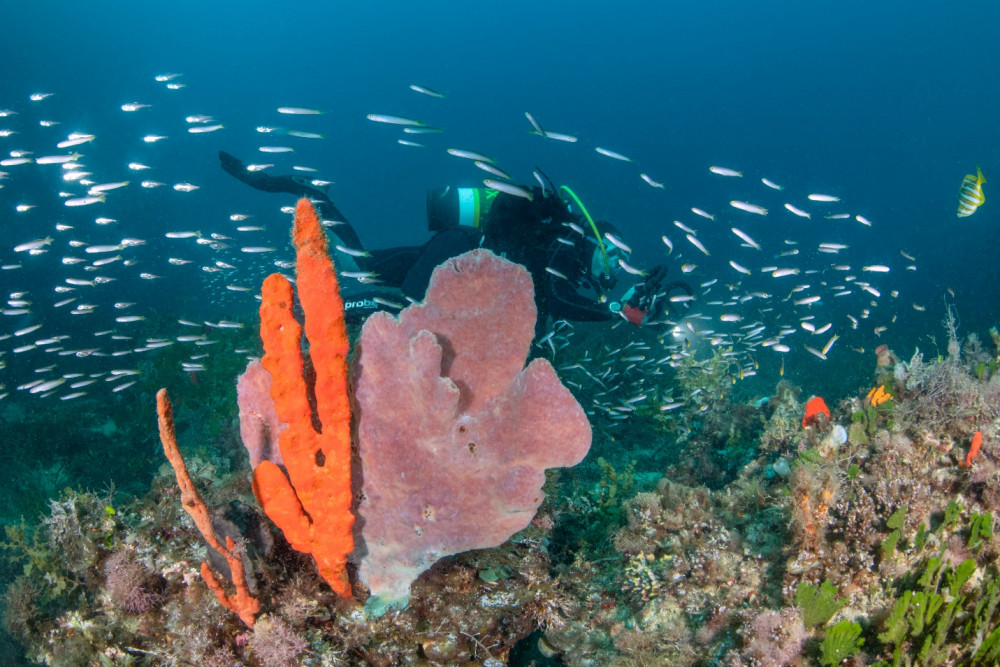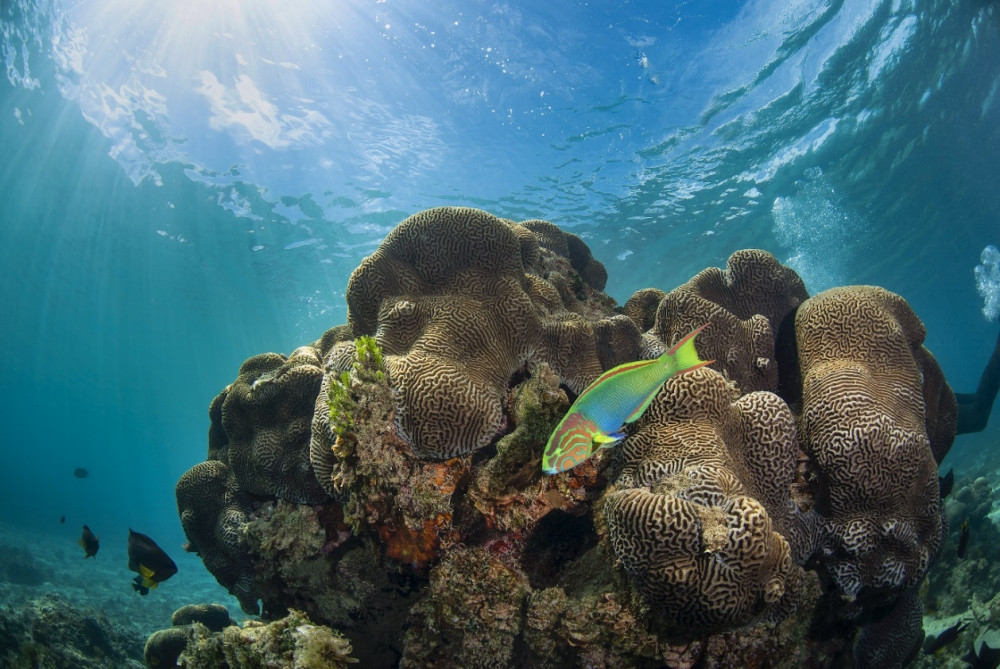Where
All Australian Marine Parks
Who
Reef Life Survey is a non-profit citizen science program in which trained SCUBA divers undertake standardised underwater visual surveys of reef biodiversity on rocky and coral reefs around the world.
When
2012 - 2021
Why
Shallow reefs that can be visited by divers occur in all six Australian Marine Park regions. The Coral Sea Marine Park and the North and North-west Networks tend to have coral reefs; the Temperate East Network has a combination of coral (for example Elizabeth and Middleton Reefs in Lord Howe Marine Park) and rocky reefs (for example the Cod Grounds Marine Park); and the South-west and South-east Networks have rocky reefs.
Only a small percentage of the available seabed in any given network is reef, but these reefs tend to host a large proportion of the species richness that has been documented in each region. This reflects the role of reefs everywhere in attracting a high abundance of marine life - occupying less than 1 per cent of the ocean’s surface, reefs across the globe host approximately 25 per cent of marine biodiversity.
How
Biodiversity surveys were conducted on almost 1700 underwater transects at over 500 shallow reef sites, spanning across all Australian Marine Park regions and the Coral Sea Marine Park between 2012 and 2021. Each survey involved divers laying out 50 m transect lines along the reef and counting all fishes and mobile macroinvertebrates. Surveys were repeated three times at most of the sites, all using the same methods, allowing changes in abundance, biodiversity, and biomass to be investigated. Reef Life Survey (RLS) citizen scientist divers have now surveyed over half a million square metres of reef in an effort to monitor and track the condition of reef ecosystems within Australian Marine Parks.
What did we learn
The accessibility of shallow reef habitats to a variety of scientific survey methods makes reefs the best-studied habitats within Commonwealth waters around Australia, yet reef habitats and life in the North network had remained extremely poorly understood by scientists until visited by Reef Life Survey divers. RLS surveys of North Network Reefs uncovered patches of dense hard coral gardens on top of bommies (seamounts nearly reaching the surface) miles offshore, and other bommies covered with sea fans and sea whips reaching intro the large tidal currents.
In the South-West, a narrow strip of offshore limestone reef in the Geographe Marine Park represents the only physical structure amongst miles of seagrass plains in all directions and is covered in a diverse range of colourful low-lying seaweeds. In many places, the schools of fish hovering above are the only sign of its presence when approaching it from underwater.
In the South-East, a deeper reef system only accessible to divers using re-breather (closed circuit) diving equipment is completely coated with a diverse range of mostly undescribed attached animals (e.g. bryozoans, sponges, sea fans, zoanthids). Large black coral trees extend up off the reef with a structure as large as many of the kelps found in shallower inshore reefs.
In the Temperate East, habitats vary considerably between parks, from coral reefs at Elizabeth and Middleton Reefs to coral covered rocky reefs at Norfolk Island. Habitat diversity can even be extreme within parks, like at the Cod Grounds, where distinct bands of habitats are found at different depths, seemingly driven by the different sea urchin species. Sea urchin barrens formed by Centrostephanus rodgersii urchins are found on top of the pinnacles down to ~29m, a narrow middle band of mixed zoanthids and sessile invertebrates is found from 29-31m where the pencil urchin Phyllacanthus parvispinus dominates, and then a rich colourful sessile invertebrate community found below 31m, where few urchins are found.
The coral reefs of the Coral Sea and North-West are so extensive that they cover a huge range of reef habitats, which vary mostly in relation to local factors such as exposure to ocean swells and depth, and how recently they have experienced disturbances such as heatwaves and cyclones.
What next
Increasing knowledge of what natural values lie within Australian Marine Park boundaries is a critical first step for understanding the long-term effectiveness of the management plans in place. Yet the Australian Marine Park (AMP) regions and Coral Sea Marine Park are so vast that evaluating the effectiveness of the AMPs represents a massive challenge. The diversity of the shallow reef habitats alone highlights this. Each of these different habitats supports different reef fish and invertebrate communities, and extraordinary natural, cultural and economic value. Regular monitoring of the AMP regions and Coral Sea Marine Park is needed to provide an understanding of changes in these values, but achieving the coverage of habitats around the entire country and through time will require clever and cost-effective approaches and partnerships.
Related data and publications
Edgar, GJ, Stuart-Smith, R & Cooper, A 2022, Living offshore reefs of Australian Marine Parks, Reed New Holland Publishers, Sydney, NSW.
Bennett, S. et al. The ‘Great Southern Reef’: Social, ecological and economic value of Australia’s neglected kelp forests. Marine and Freshwater Research 67, 47–56, doi:10.1071/MF15232 (2016).







